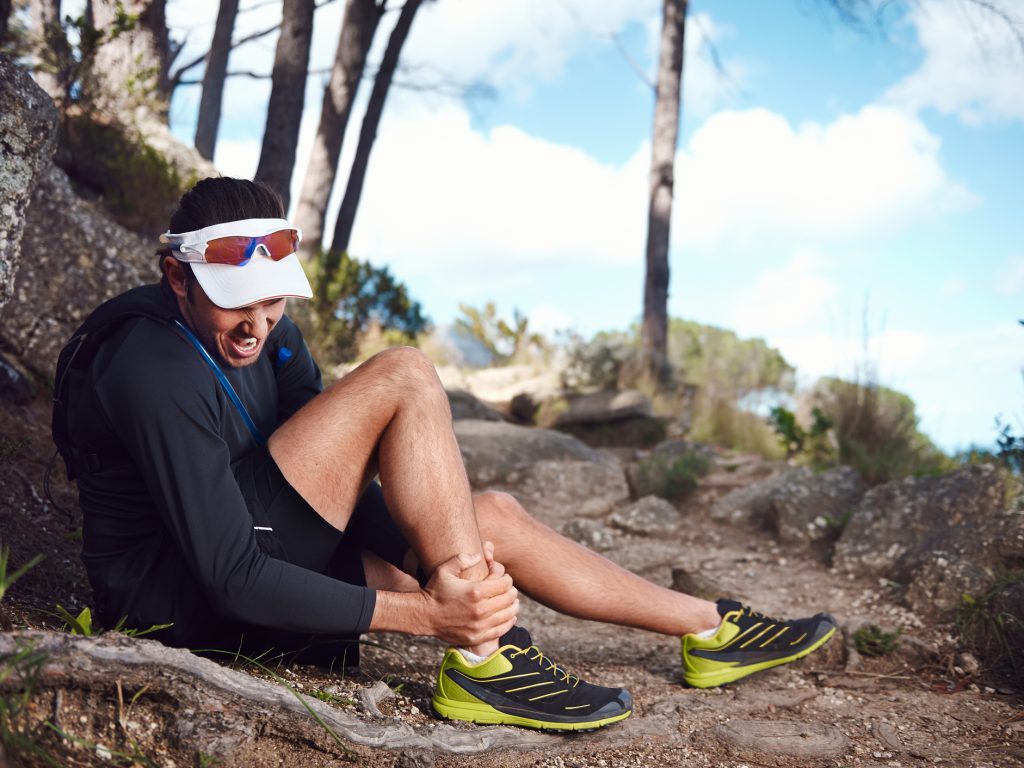Shin pain is a common complaint amongst distance runners.
There are a number of causes of shin pain, but the two most prevalent are ‘shin splints’ (aka medial tibial periostitis or medial tibial stress syndrome – MTSS) and bone stress injuries (which can culminate in a stress fracture).
MTSS is caused by repetitive traction and inflammation of the posterior tibial muscles, which attach to the posterior medial tibial border. These muscles can be felt if you run your fingers down the back of the inside edge of your shin.
Bone stress injuries range from a bone stress reaction to a complete bone fracture. They are associated with repetitive impact that occurs with regular running – especially when increasing mileage, introducing speed work or even a ‘HIT’ class. This all adds up where impact and stress on the body is concerned.

If you have recently started running, having come from an established endurance background, such as cycling, then your well-developed cardiovascular engine can sometimes mean that you are more prone to ramping up the mileage quickly. A fast engine plus too much mechanical stress to your relatively underdeveloped musculoskeletal chassis can result in injury.
Differentiating between shin splints and a bone stress injury
The only iron clad way of differentiating between the two is to have an MRI scan (not an x-ray – which frequently miss stress fractures). There are thankfully tell-tale signs associated with each injury.
The 3 red flag signs for a bone stress injury are:
- Pain that worsens specifically on weight bearing activity (e.g. running, hopping).
- Pain which is very well-localised on palpation of your shin
- Pain which is present at night
A tibial bone stress injury often results in marked pain on weight bearing activities, which gets more intense with activity, and NOT better once ‘warmed up’. If when you prod your shin you find that you have very focal tenderness that is between 1 mm and 1.5 cm in size, this can be a sign of bone stress injury. Pain and ‘awareness’ of your shin at night is another feature that would raise the suspicion of bony injury.
MTSS – medial tibial stress syndrome
MTSS typically results in pain that is felt more broadly along the length of the medial border of the tibia. You may have noticed in runs prior to having shin pain, that you experienced a sense of tightening in the calf muscles. When problems first start, you might only experience pain at the beginning and end of the run. Pain will be worse in the morning and pulling your toes up towards your shin will be painful.
Treating shin pain
Ignoring shin pain and trying to ‘push through’ the pain rarely achieves anything other than making symptoms worse. You might find yourself with a case of MTSS which progresses to a full-blown fracture. Your stubborn efforts to keep running can often be rewarded with at least 6 weeks of enforced rest and having to wear an Aircast boot!
The first thing to do is to get prompt medical assessment from a Sports Physician or Physiotherapist who have a specific interest in running. They will be able to assess, and arrange appropriate diagnostic imaging to ensure that your injury is optimally looked after. They will also be able to work with you to identify any biomechanical, muscle length and strength deficits that may have contributed to your symptoms in the first place.
In the short-term, you will need relative rest from running – and other aggravating activities – importantly however this does not mean that you should be putting your feet up on the sofa for 6 weeks.
In milder cases of shin splints (not stress fractures/fractures) it may be possible to continue a little running, and to maintain cardiovascular fitness by introducing non-impact cross-training such as cycling and elliptical trainers, at a reduced volume and intensity, providing that you do not experience pain during the activity or any increased pain afterwards.
In cases of stress fractures it will be necessary to have a period of reduced or non-weight bearing rest on the effected limb, which may involve using crutches and/or an Aircast boot.
Preventing recurrent shin pain
To prevent the recurrence of shin pain and a second dose of the dreaded Aircast boot – it is important to examine all possible contributing factors.
These factors are often multifactorial and can be grouped under two main headings:
- Factors that can modify how load is applied to bone (e.g. running biomechanics, lower limb alignment, muscle strength, footwear, and even running terrain)
- Factors that modify how bone tolerates loading (e.g. genetics, diet and nutrition, endocrine status and hormones, physical activity history, bone diseases, medications influencing bone) (Warden et al., 2014).
Sorting out your dodgy running biomechanics:
- There are several risk factors associated with tibial stress injuries that are linked to running style. For example, runners who land heavily and have a slow step rate (and therefore have higher vertical loading rates) are more susceptible to tibial stress injuries. Getting your gait assessed in the context of your injury, can be a vital component of successful rehabilitation. A physiotherapist with a special interest in running rehab will be able to help improve your form. ‘Coaching cues’ or ‘gait retraining’, can be used to iron out any suboptimal movement patterns which you may have.
- A comprehensive biomechanical assessment will also test for muscle strength, length and joint restrictions (or excessive mobility), and might involve the prescription of a targeted strength and conditioning program to address any problems.
- Seeking the advice of a Sports Podiatrist to assess the influence of footwear on your running biomechanics can also be a very valuable piece of the rehabilitation puzzle – especially if you have very flat or high arched feet.
Training schedule
Shin pain (like most running overuse injuries) is often linked to the ‘too much, too soon’ phenomenon. Don’t forget to factor in non-running related exercise, which adds to your overall training load.
Getting expert advice from a UK Athletics Qualified Running Coach or running specialist physiotherapist, or Sports Physician is an invaluable way to help structure your training habits in a sustainable and periodised way. This will keep you injury free, training consistently and ultimately improving your running.
Consider getting a medical review
Obtaining a medical review with a Sports Physician or interested GP, is a great way to screen for factors that are linked to poor bone health. You should consider this, especially if you have had a history of stress fractures, a low body mass index, irregular or absent menstrual cycles, and if your energy expenditure often exceeds your calorific intake..
In summary, if you have shin pain seek qualified advice as soon as possible and use this as an opportunity to examine how you might be able to improve your training habits, running form and nutrition.



